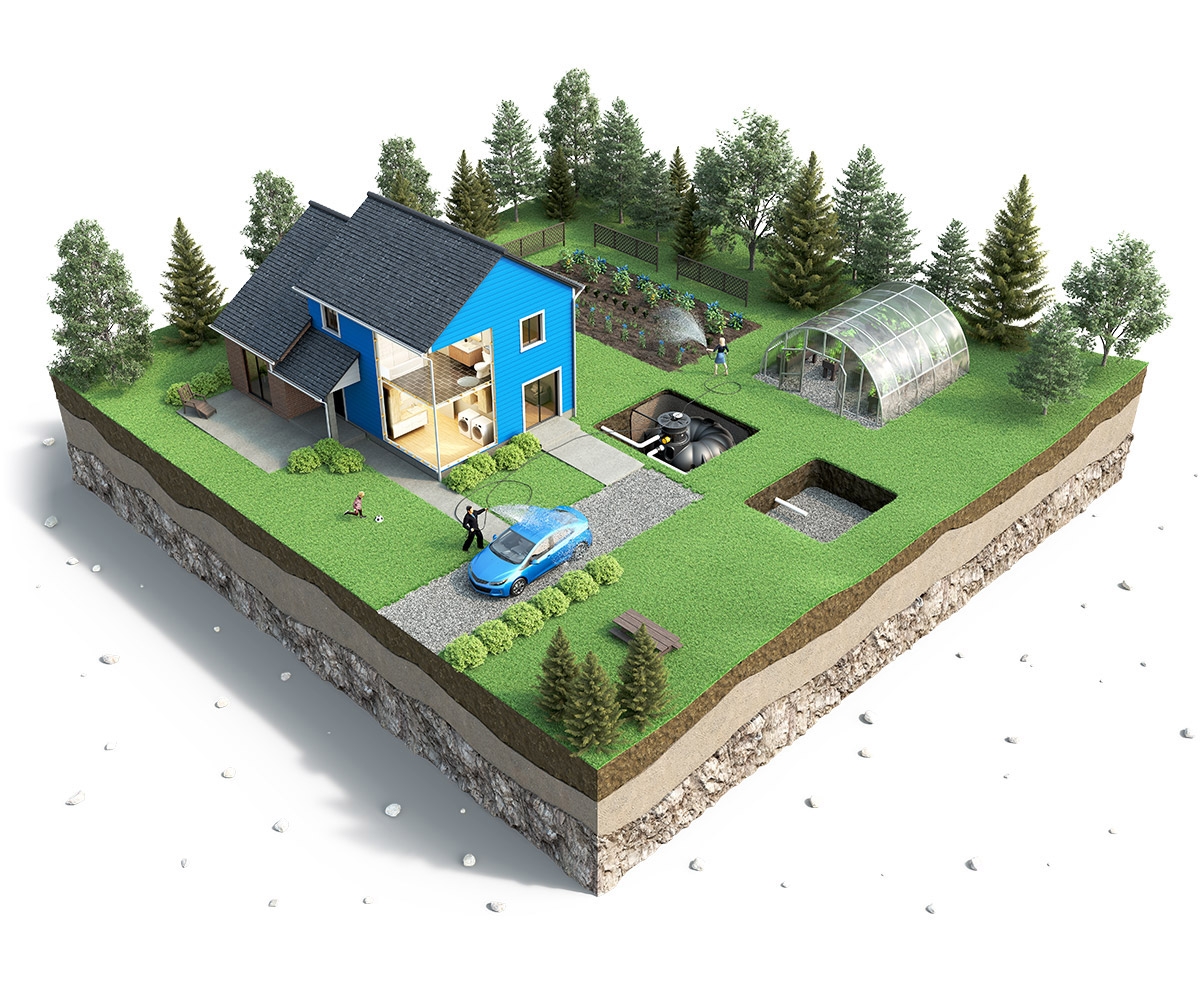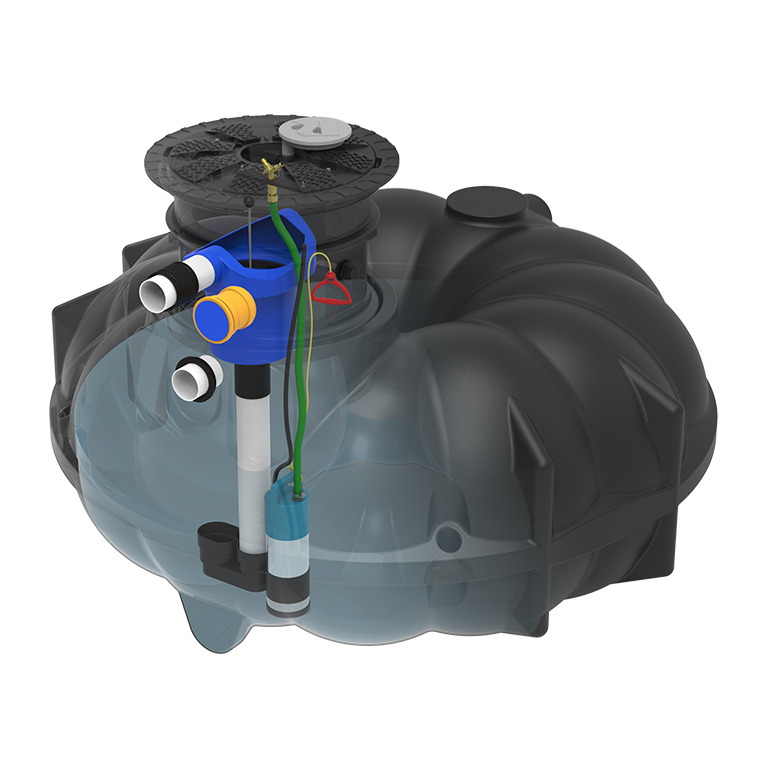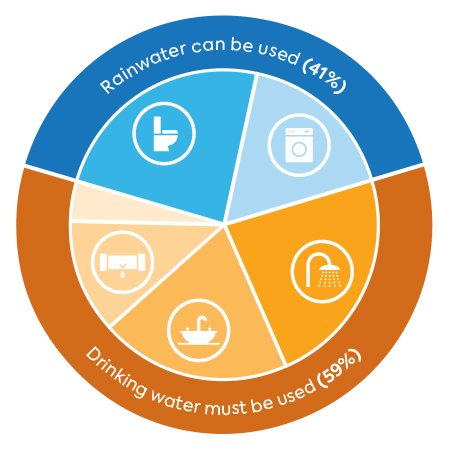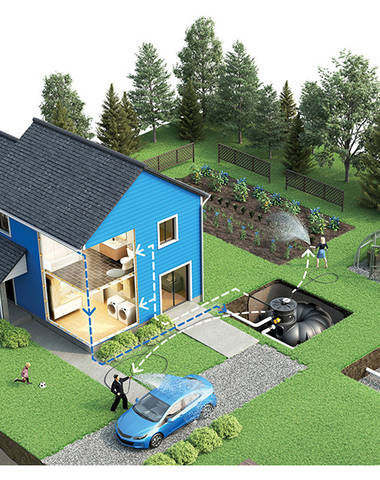Rainwater harvesting systems
The Rewatec rainwater harvesting system limits the damaging effects of runoff and gives you 24/7 access to fresh water for toilets, gardens, fire hydrants, and more.

Eco-responsible
Eco-responsible
Versatile designs
Versatile designs
Simple to install
Simple to install
Easy to use
Easy to use
What is a rainwater harvesting system?
A rainwater harvesting system collects and stores rainwater that would otherwise become runoff and potential floodwater. It gathers rainwater from a rooftop and directs it into a tank, where it can be stored for later use.
The Rewatec rainwater harvesting system is the ideal solution for residential, business, and community projects.
It works with any roof type and it can easily be configured for an aboveground or underground storage tank sized to meet your needs. For even more personalization, you can choose to use rainwater indoors and outdoors, or outdoors only.

Best of all, the system is simple to install and use. Our solutions come pre-assembled, making them the perfect complement to new constructions and retrofits.
Once installed, the Rewatec rainwater harvesting system requires no water softeners or tricky maintenance. A few minutes of upkeep each year is all it takes to make the most out of your available rainwater.
Where are our rainwater harvesting systems used?
The Rewatec rainwater harvesting system is most often a solution for:
- homes and seasonal cottages
- office buildings
- schools
- microbreweries and wineries
- orchards
- community pools
- ice rinks
- projects seeking LEED certification
Specific uses for harvested rainwater
Harvested rainwater can be used in countless ways. Some of the more common uses include:
- toilets and urinals
- washing clothes
- washing vehicles
- watering and irrigation
- filling pools and spas
- flooding ice rinks
- cleaning roads and sidewalks
- fire hydrants
- livestock
Why harvest rainwater?
The average European uses 144 L of water at home daily. Consumption is even greater in Canada and the United States, where the average person uses more than 300 L each day.
This water is treated and distributed by costly municipal systems, and yet only a small fraction of it is used for functions that actually require potable water.
The scale of waste is enormous — and so is the opportunity it gives us to protect precious drinking water supplies by making better use of rain.

How do our rainwater harvesting systems work?

Collection
Rainwater is first collected by rain gutters (for sloped roofs) or a drain (for flat roofs). It then reaches a primary filter that prevents leaves, insects, and other debris from entering the system. Water that passes through the filter flows into a recovery tank.
Storage
Collected rainwater is stored in a leak-proof tank that is installed on the property or inside a building.
The tank is equipped with a circulation system that prevents water stagnation. During a downpour, this system evacuates liquid at the bottom of the tank to ensure that only the freshest water remains.
Rainwater use
Using harvested rainwater is simple. A specially designed pump directs stored water through a micro-filter that removes any small particles, then provides optimal pressure to supply appliances, plumbing fixtures, and building systems.
If no rainwater is available in the storage tank, all appliances are automatically and reliably supplied from the regular water system.
Rainwater harvester maintenance
The Rewatec rainwater harvesting system is designed to operate reliably and autonomously for years. But, like all rainwater recovery systems, it requires periodic maintenance to ensure high performance.
As part of this simple maintenance schedule, you should:
- rinse ground filters twice per year (spring and fall)
- rinse the toilet-supply filter (every three to six months)
- empty aboveground tanks, open the taps, and put the pump into storage (for seasonal use)
Find near you
Choose your local website to discover Rewatec rainwater harvester products and services near you.